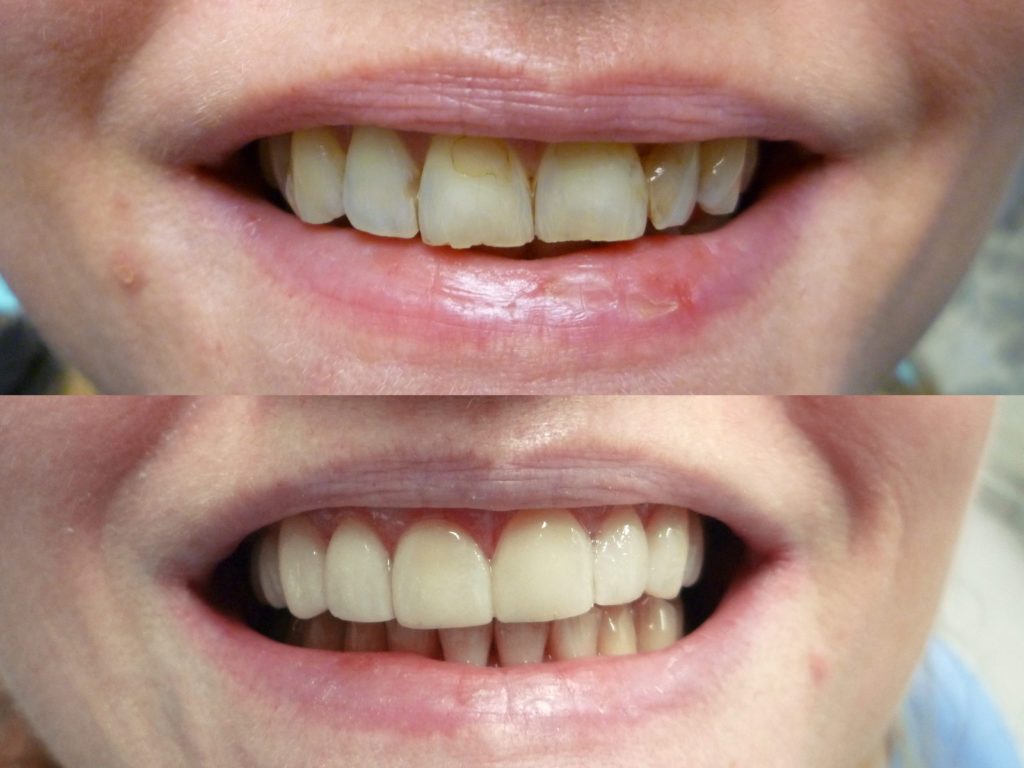So, you when to the dentist and they recommend you had veneers made for your front teeth, but, what is a veneer and why do you need one – or even a whole set?
Dental veneers are custom-made shells of tooth-colored materials that cover the front surface of teeth These shells are bonded to the front of the teeth changing their color, shape, size, or length.
Dental veneers can be made from porcelain or from resin composite materials. Porcelain veneers resist stains better than resin veneers; resin veneers are cheaper than porcelain veneers.
Veneers are used to fix:
- Teeth that are discolored
- Teeth that are worn down
- Teeth that are chipped or broken
- Teeth that are misaligned, uneven, or irregularly shaped
- Teeth with gaps between them (to close the gap)
Getting a dental veneer usually requires:
Diagnosis and planning.
The dentist will examine your teeth to make sure dental veneers are appropriate for you and discuss what the procedure will involve and some of its limitations. He or she also may take X-rays and possibly make impressions of your mouth and teeth.
Preparation.
The dentist will remove about 1/2 millimeter of enamel from the tooth surface, which is an amount nearly equal to the thickness of the veneer. Next, your dentist will make a model or impression of your tooth. This model is used to create veneers that will bond perfectly to your teeth. It usually takes 2-4 weeks the veneers to be ready. Temporary dental veneers can be placed while you wait for permanent ones.
Bonding.
Before the dental veneer is permanently cemented to your tooth, your dentist will temporarily place it on your tooth to examine its fit and color. To prepare your tooth to receive the veneer, your tooth will be cleaned, polished, and etched — which roughens the tooth to allow for a strong bonding process. A special cement is applied to the veneer and the veneer is then placed on your tooth. Once properly position on the tooth, your dentist will apply a special light beam to the dental veneer, which activates chemicals in the cement, causing it to harden or cure very quickly. The final steps involve removing any excess cement, evaluating your bite and making any final adjustments in the veneer as necessary.

Veneers offer the following advantages:
- They provide a natural tooth appearance.
- Gum tissue tolerates porcelain well.
- Porcelain veneers are stain resistant.
- The color of a porcelain veneer can be selected such that it makes dark teeth appear whiter.
- Veneers offer a conservative approach to changing a tooth’s color and shape; veneers generally don’t require the extensive shaping prior to the procedure that crowns do, yet offer a stronger, more aesthetic alternative.
- Veneers last from 7 to 15 years
- They do not require for special care but is recommended trying to stay away from staining foods
In Mexico he cost can go from 3500 to 6000 per teeth depending if the veneer is porcelain or resin, they are usually not covered by insurance, so be sure to check with your dentist before agreeing to the treatment and remember to inquire about the expected lifetime of the veneer and the care tips for them.
Article written by:
Ana Maria Castillo Baez D. D. S.
Medical License: 874856





